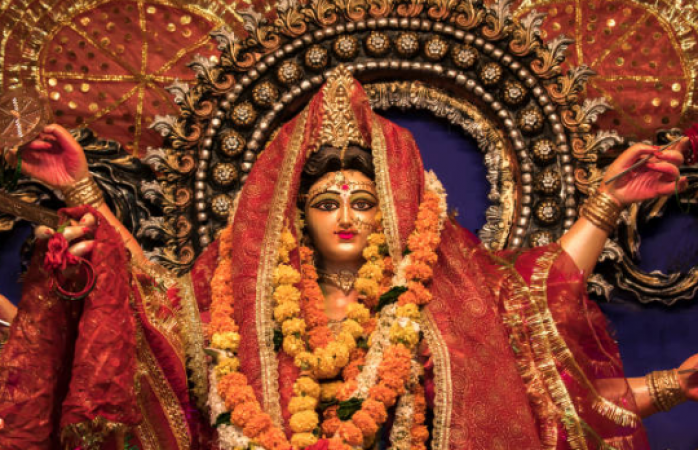
Goddess Maa Durga, also known as Mata Rani or Shakti, holds a significant place in Hindu mythology and is revered as the ultimate embodiment of divine power and feminine energy. The history of Mata Rani is steeped in ancient tales of valor, compassion, and triumph over evil. Devotees across the world worship her with utmost devotion, seeking her blessings for strength, protection, and fulfillment of their desires. In this article, we delve into the rich history of Mata Rani and explore the various ways to worship her in the temple.
Historical Background:
According to Hindu mythology, Mata Rani is an incarnation of Goddess Parvati, the consort of Lord Shiva. The legends surrounding her birth and divine exploits are narrated in the ancient scriptures, primarily in the Devi Mahatmya or Durga Saptashati. It is believed that Mata Rani was created by the combined energy of various gods to vanquish the demon king Mahishasura, who had unleashed a reign of terror on both heaven and earth.
The Battle against Mahishasura:
Legend has it that Mahishasura, granted a boon by Lord Brahma, had become virtually indestructible. With his immense power and arrogance, he threatened the gods and established his dominance over the three worlds. The gods, unable to defeat Mahishasura, approached the Trinity of Brahma, Vishnu, and Shiva, seeking a solution. From their combined energy, Mata Rani emerged as a fierce warrior goddess, armed with weapons bestowed upon her by various gods.
The epic battle between Mata Rani and Mahishasura lasted for nine nights and ten days, known as Navratri. Mata Rani demonstrated her extraordinary strength, defeating Mahishasura and liberating the universe from his tyranny. This victorious battle became the foundation of Navratri, a festival celebrated with immense fervor and devotion to honor the divine triumph of Mata Rani.
Forms and Symbolism:
Goddess Maa Durga is depicted in various forms and avatars, each representing different aspects of her divine nature. The most popular forms of Mata Rani include:
Durga: The invincible warrior goddess, symbolizing strength and protection.
Kali: The fierce form, representing the power of time and destruction of evil.
Amba: The nurturing motherly form, symbolizing love, compassion, and care.
Bhairavi: The form associated with knowledge and wisdom.
These diverse forms of Mata Rani highlight the multifaceted nature of feminine power and inspire devotees to seek her blessings for different aspects of their lives.
Worshiping Mata Rani:
Temples dedicated to Mata Rani are spread across India and are thronged by millions of devotees seeking her divine grace. The worship of Mata Rani follows a prescribed ritualistic pattern, involving the following elements:
Preparation: Devotees begin by purifying themselves through a bath or cleansing rituals before entering the temple premises. They dress in clean and modest attire as a sign of respect.
Offerings: Devotees bring offerings such as flowers, fruits, incense sticks, and sweets to present to Mata Rani. These offerings are considered as tokens of devotion and gratitude.
Chanting and Prayers: Devotees engage in the chanting of sacred hymns and mantras dedicated to Mata Rani. The most popular chant is "Om Dum Durgayei Namaha," invoking the blessings of the goddess.
Arti and Bhajans: Devotees participate in the singing of devotional songs (bhajans) and perform the arti, a ritual of waving a lamp before the deity to invoke her blessings.
Fasting: Many devotees observe fasting during Navratri or on specific days dedicated to Mata Rani. Fasting is seen as a means to purify the body and mind, and to express one's dedication and devotion to the goddess.
Seva : Devotees can offer their services at the temple, such as distributing prasad (consecrated food), helping with temple activities, or assisting fellow devotees.
The history of Mata Rani is a testament to the power of feminine energy and the triumph of good over evil. Her worship in temples is marked by devotion, rituals, and the sincere longing for her blessings. As devotees immerse themselves in the rich legends and rituals associated with Mata Rani, they seek her divine guidance, protection, and strength to navigate life's challenges. The worship of Mata Rani is an opportunity to connect with the divine and experience the boundless love, compassion, and grace that she represents.
Know about the roots of the ancient religion of India
Gomateshwara Temple: Monolithic Statues
The Significance of Bells in Temples: Unveiling Their Musical Charm